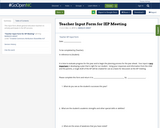
This input form allows general education teachers to actively participate in the IEP process.
- Subject:
- English Language Arts
- Exceptional Children
- Mathematics
- Reading Foundation Skills
- Material Type:
- Questionnaire
- Date Added:
- 12/04/2019

This input form allows general education teachers to actively participate in the IEP process.

This input form allows general education teachers to actively participate in the IEP process.
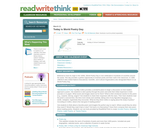
Students read and respond to Billy Collins' poem "Introduction to Poetry." Students then write about a favorite poem and imagine the perfect way to read it.
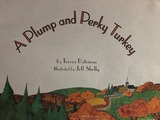
Students will listen to the teacher read aloud A Plump and Perky Turkey by Teresa Bateman (Scholastic INC.) and be able to discuss character motivation in the story. They will apply their understanding of the story plot and character motivation in order to complete a creative written response.
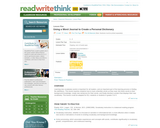
Students will be the definition of vocabulary experts as they use the skills they learn in this lesson to track, define, and ultimately master unfamiliar words.
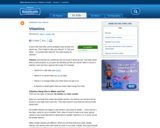
Students learn about vitamins and the basic information about each of the common vitamins (A, B, C, D, E, and K). Text for this article is appropriate for the upper elementary and middle grade levels. A Spanish version of the article and a read-aloud option are also provided on the site.

This is the fourth lesson on weather in a unit called Weather Trackers (http://www.beaconlearningcenter.com/unitplan/11468.htm). This lesson primarily deals with types of tools that scientists use to study weather. Students have the opportunity to do a fun cooperative learning activity that will review other skills such as pictorial graphing. Prior to the activity, students will read What Will the Weather Be Like Today? by Paul Rogers.

Using this student reproducible, from a ReadWriteThink lesson, students explain what friendship means to them by finishing a series of statements.
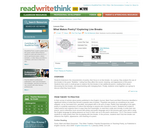
Students read various poems and explore why lines are broken where they are and how they affect rhythm, sound, meaning, and appearance in poetry.

This resource includes a video and a text article about tornadoes and scientists who attempt to study the storms by chasing them.

This lesson combines a read aloud book with musical accompaniment. Students will perform a simple repeating rhythm pattern on each page of the book. Students will be motivated with the interactive elements of reading the story. Students will anticipate and predict the text of the story and will read along with a phrase from each page of the book. This lesson can be facilitated by non-music teachers as well as music teachers. Any teacher can incorporate simple rhythms and melodies into read alouds, increasing engagement and motivation for students!
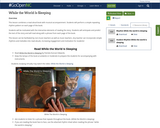
This lesson combines a read aloud book with musical accompaniment. Students will perform a simple repeating rhythm pattern on each page of the book. Students will be motivated with the interactive elements of reading the story. Students will anticipate and predict the text of the story and will read along with a phrase from each page of the book. This lesson can be facilitated by non-music teachers as well as music teachers. Any teacher can incorporate simple rhythms and melodies into read alouds, increasing engagement and motivation for students!

Can you use things from around the house and/or your yard to build houses like the three little pigs? Try a house out of straw (or a close substitute), stick...

Join Kathy as she tells you the story of the 3 Little Pigs, but - trust us - this is a version you have never heard before. Don't forget to check out part 2.

Learn to find the meanings of "mysterious" words by analyzing context clues, word roots, prefixes, and suffixes in this interactive tutorial.

Students learn about bones and outlines the basic information about each of the major bone groups of the human body. Text for this article is appropriate for the upper elementary grade levels. A Spanish version of the article and a read-aloud option are also provided on the site.
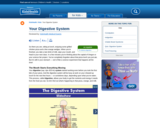
Students learn about the digestive process and describes each major organ in the system. Text for this article is appropriate for the upper elementary levels. A Spanish version of the article and a read-aloud option are also provided on the site.

Students learn about the human ear and the basic information about each part of the ear (structure and function) and how the ears are used for hearing and balance of the body. Text for this article is appropriate for the elementary level. A Spanish version of the article and a read-aloud option are also provided on the site. This resource supports the English language development of English language learners.

Students learn about the human eye and how it works and the basic information about the different parts of the eye. Text for this article is appropriate for the upper elementary and middle grade levels. A Spanish version of the article and a read-aloud option are also provided on the site.

Students learn about the heart and circulatory system and how to monitor and care for the heart. Text for this article is appropriate for the upper elementary levels. A Spanish version of the article and a read-aloud option are also provided on the site.